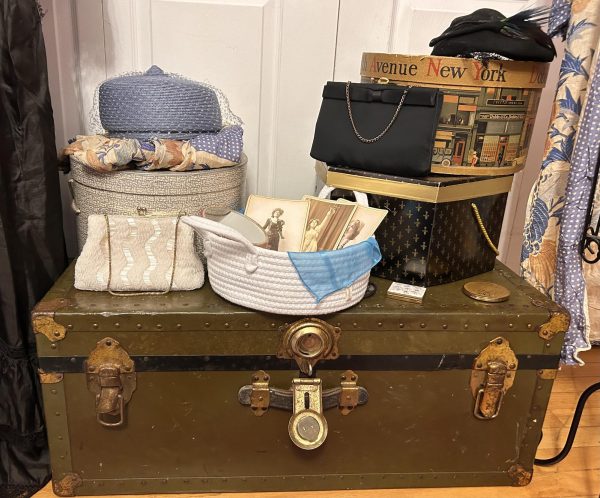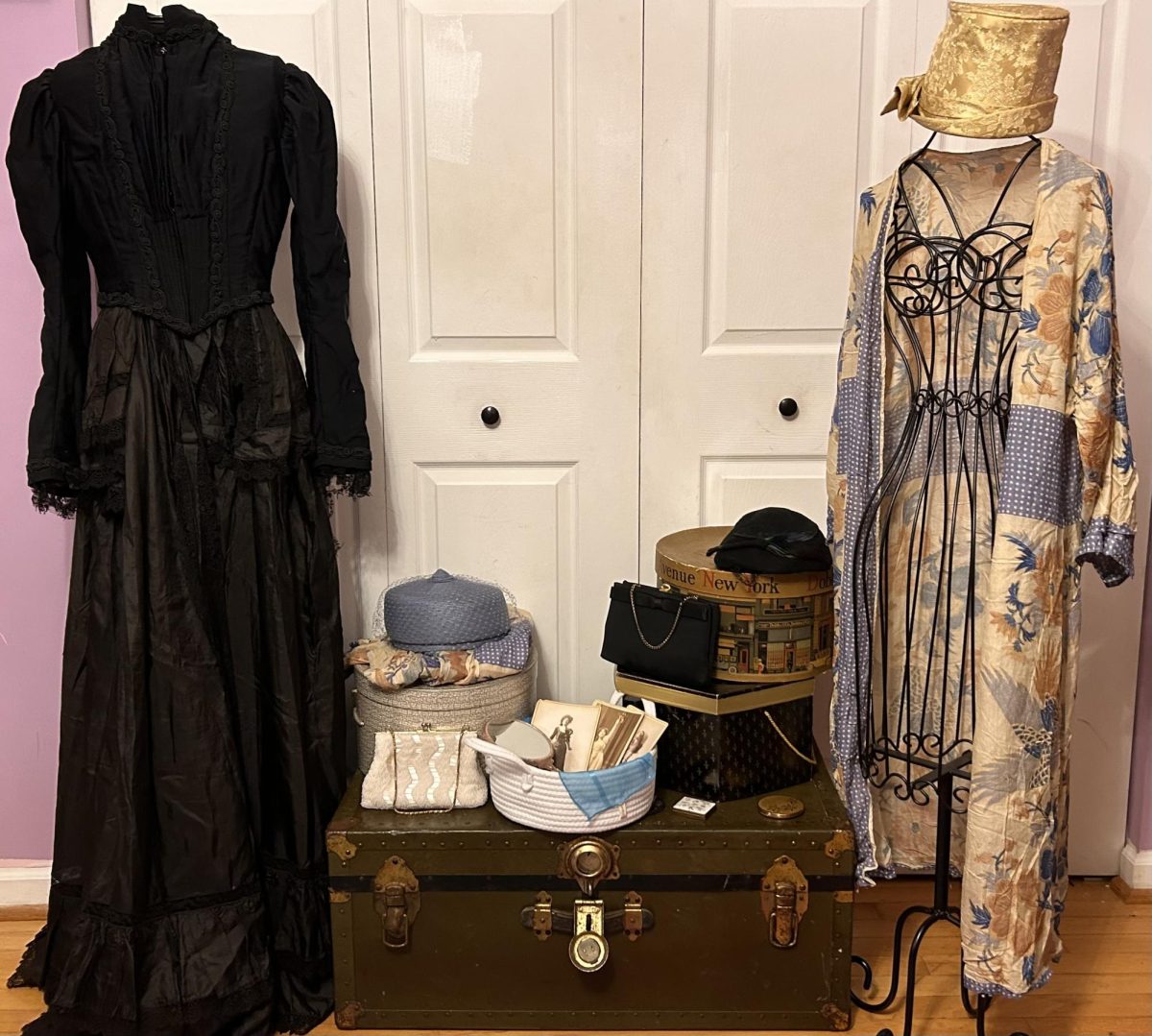 For the last year-and-a-half or so, I have been collecting antiques and vintage fashion. I collect these things because it feels like tangible history and a deeper connection to the past. My collection ranges from the early 1880s to the late 1960’s. In my perusing of antique shops and thrift stores alike, I’ve found myself in possession of all sorts of things: powder compacts, purses, mirrors, old photos, hats, and even a WWII U.S. Army trunk (footlocker) dated to about 1944. But my favorite thing (and the most numerous collected) is millinery (hats), specifically from the 1940s to the 1960s. I love them all! The powder blue pillbox hats with their Jackie Kennedy-esque elegance, the small fur hats of the turn of the century, and even the simplistic and plain hats of wartime.
For the last year-and-a-half or so, I have been collecting antiques and vintage fashion. I collect these things because it feels like tangible history and a deeper connection to the past. My collection ranges from the early 1880s to the late 1960’s. In my perusing of antique shops and thrift stores alike, I’ve found myself in possession of all sorts of things: powder compacts, purses, mirrors, old photos, hats, and even a WWII U.S. Army trunk (footlocker) dated to about 1944. But my favorite thing (and the most numerous collected) is millinery (hats), specifically from the 1940s to the 1960s. I love them all! The powder blue pillbox hats with their Jackie Kennedy-esque elegance, the small fur hats of the turn of the century, and even the simplistic and plain hats of wartime.
It may seem a little unorthodox, but I feel clothing items can recount the story of humanity with intensity and realness, unlike any other antique or heirloom I know of. I have the bodice of a late-victorian mourning dress likely from 1882, made of heavy black crepe and is in museum quality condition, and yet it shows its age and has been adjusted as time went on. It is lovely when garments have been reconstructed like this because someone cared enough about them to have them restructured to the new style or silhouette.
That is not the connection we have with our clothes today in this fast-fashion world. Despite climate change and global waste, modern clothing culture broadcasts the antithesis. ‘Get the new style so you won’t become unfashionable and irrelevant.’ The world throws away one garbage truckload worth of clothing per second, 1.5 Empire State buildings per day, and enough to fill Sydney Harbor in a year (statistics courtesy of the Ellen MacArthur Foundation, 2019).
So in conclusion, maybe these clothes have more significance than we realize. They are the clothes someone loved too much to discard after they fell out of fashion, the dress someone couldn’t bear to part with. In light of all this, I pose the question, where will your wardrobe be in 20, 30, or even 50 years?







